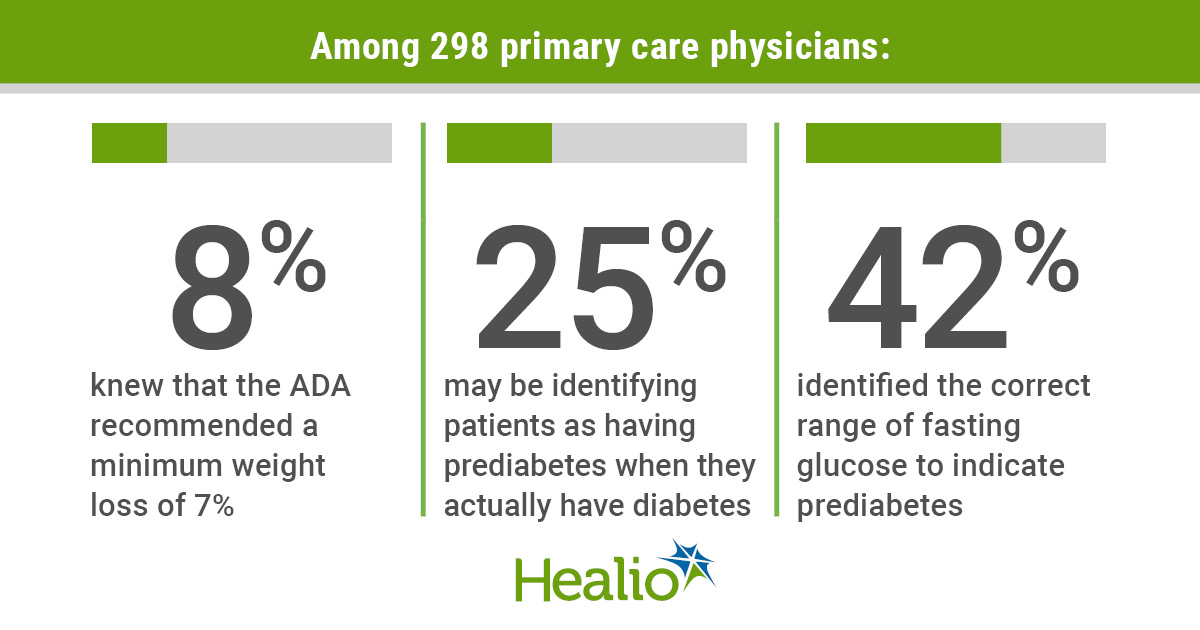Many PCPs lack knowledge about prediabetes, survey finds
Click Here to Manage Email Alerts
Many primary care physicians lack knowledge of the risk factors, diagnostic criteria and management and prevention of prediabetes, according to results of a national survey published in the Journal of General Internal Medicine.
“Our survey findings suggest that these gaps contribute to doctors underscreening for and missing diagnoses of prediabetes, and in turn, not referring patients to type 2 diabetes prevention programs," Eva Tseng, MD, MPH, assistant professor of general internal medicine at the Johns Hopkins University School of Medicine, said in a press release.
Investigators sent a survey to 1,000 PCPs listed in the AMA’s Physician Master File. The survey included questions about risk factors that should promote prediabetes screening, laboratory criteria that indicates prediabetes diagnosis, and prediabetes management recommendations.
A total of 298 eligible PCPs returned completed surveys. Of those, only 36% indicated that they referred patients to a diabetes prevention lifestyle change program as their initial approach to managing prediabetes.

Among the respondents, only 43% discussed initiating metformin treatment for patients with prediabetes.
Just 8% of PCPs correctly said that 7% of body weight was the minimum weight loss needed for patients with prediabetes — a goal recommended by the American Diabetes Association — and only 42% selected the correct values of fasting glucose to indicate prediabetes.
Investigators noted that on average, PCPs selected only 10 of 15 correct risk factors for prediabetes, and the physicians most often failed to identify African Americans and Native Americans as high-risk groups.
Based on the survey responses, approximately 25% of PCPs may be diagnosing people with prediabetes when they have diabetes, which could delay these patients from getting diabetes-specific care.
“We believe that what was learned from our survey can have implications for changing national guidelines and policies regarding type 2 diabetes prevention, including establishing measures of quality for diagnosing and managing prediabetes,” Tseng said. “The public can help by advocating for more insurers to cover prevention programs, along with insisting that public health stakeholders expand access to and availability of these interventions.” – by Erin Michael
Disclosure: The authors report no relevant financial disclosures.
